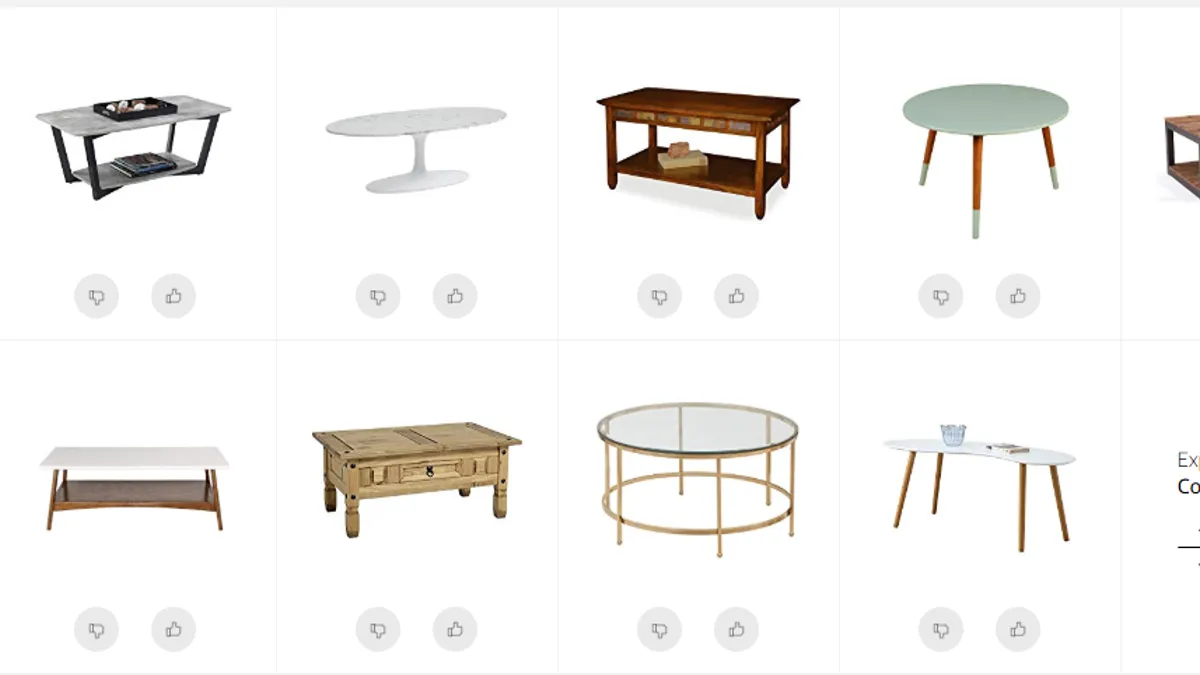Dive Brief:
-
Amazon has launched a new personalized shopping recommendation service called Scout, which filters recommendations for shoppers based on items they "like" or "dislike" by clicking on a thumbs-up or thumbs-down icon on product tiles, according to a page on the company's website.
-
The service's merchandise focus is currently limited to furniture, home décor and women's shoes, though the Amazon sub-site also contains a message promising "more categories coming soon."
-
Shoppers browsing Amazon's website for relevant items — a "mission style end table," for example — may land on product pages that feature a button at the end of the product description that says "Scout/Style Explorer." Clicking on the button takes the shopper to the Scout sub-site, where they are presented with several products they can like or dislike.
Dive Insight:
Scout is another example of how Amazon is using machine learning technology to redefine automated personalization. More than a year ago, Amazon CEO Jeff Bezos spoke about how deeply artificial intelligence and machine learning are influencing Amazon's business, even mentioning product recommendations as one of those areas.
This new approach appears to be aimed at boosting discovery. Scout reflects shoppers' desire for more personalized shopping experiences by giving them choices they can make on their own to drive the shopping journey one direction or another. Increasing personalization has been a goal for many retailers, but it has proven to be an elusive one, with customer distrust and hesitancy about handing over personal details being one of the major issues. Amazon's approach with Scout brings personalization back to the starting line and puts customers in control, allowing them to contribute new data by making simple choices, and continuing or stopping that process on their own terms.
Scout also reflects the reality that shopping search capabilities, despite being immensely useful, are not always the easiest way to start an online shopping journey if you only have the most general idea what you want. It's also not the easiest method for shopping visually. Although emerging image search technology is helping shoppers link what they see in the world to an item they want to buy, most search engines present limited visual results and don't present items in a way that allows for easy side-by-side comparison
Judging from Wall Street's reaction to this news, Scout could be a major development for Amazon, and a crushing one for competitors. Wayfair, for example, took a stock price hit on the potential for Scout to change the way people shop for furniture, according to CNBC. But, it seems unlikely Amazon is sparking another e-commerce revolution here. Many shoppers still have specific ideas about what they want to buy, and though Scout seems quick and easy to use, and instantly refines recommendations based on likes/dislikes, a shopper on a mission won't have a need for it.














